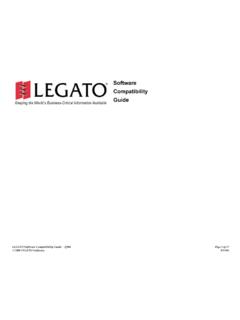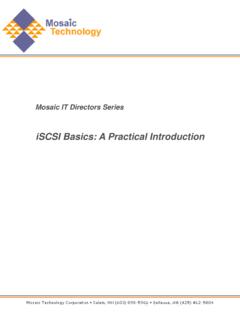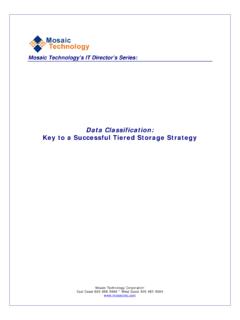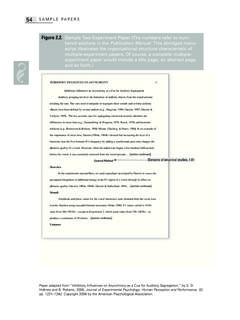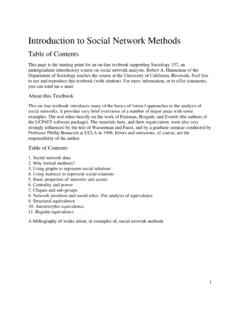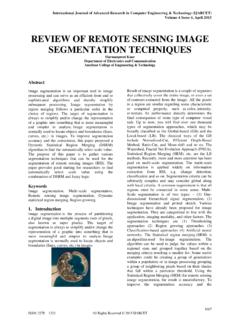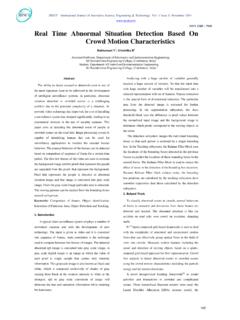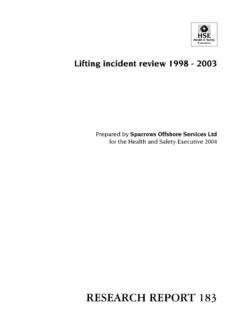Transcription of VMware Basics -- Cap Planniong - Mosaic …
1 Mosaic s IT Director Series VMware Basics Capacity Planning and Performance Monitoring VMware Basics Capacity Planning Mosaic Technology 2 VMware Basics Capacity Planning and Performance Monitoring Introduction_____ 3 VMware Complexity_____ 5 VMware Virtual Infrastructure Overview_____ 5 Physical Objects_____ 6 ESX Server Hosts_____ 6 VirtualCenter Server_____ 7 Virtual Objects_____ 7 Virtual Machines_____ 7 DataCenters_____ 8 Datastores_____ 9 Clusters_____ 9 Resource Pools_____ 9 Folders_____ 11 Performance Monitoring and Capacity Planning In VMware Environments_____ 12 Capacity Planning_____ 12 VMware Performance Monitoring_____ 13 Virtual Machines_____ 13 ESX Hosts_____ 13 Clusters_____ 13 Resource Pools_____ 13 VMware s Monitoring Capability_____ 14 Finding VMware s Goldilocks Zone with v Charter Pro_____ 14 vCharter Pro_____ 15 VM status summary view_____ 16 ESX Host Server View_____ 17 Cluster View_____ 18 Resource Pools View_____ 19 Summary_____ 20 About Mosaic Technology_____ 20 VMware Basics Capacity Planning Mosaic Technology 3 Finding VMware s Goldilocks Zone "This porridge is too hot," Goldilocks exclaimed.
2 So she tasted the porridge from the second bowl. "This porridge is too cold." So she tasted the last bowl of porridge. "Ahhh, this porridge is just right!" she said happily. And she ate it all up. In NASA and Astronomy terms the Goldilocks Zone is an area of space in which a planet is just the right distance from its home star so that its surface is neither too hot nor too cold. In VMware environments ESX Hosts Goldilocks Zone is where resource utilization levels are: Not too high. Not too low. Just right. ~ Introduction We virtualize servers to consolidate and maximize resource utilization. A successful virtualization is in the Goldilocks Zone when it: Takes full advantage of available resources without hitting use levels that degrade performance of one or more virtual machines (too high) And uses available resources at levels that don t dip below minimum established utilization rates (too low) You can achieve consistent VMware Goldilocks Zone performance with sound capacity planning and performance monitoring.
3 And therein lays the problem. Virtualization changes everything. Traditional approaches to infrastructure management while sound in concept no longer work. As companies race to take advantage of the well known benefits of virtualization they frequently are not prepared to deal with realities of a virtualized world. In a typical scenario IT management decides to invest in virtualization. VMware is purchased, an administrator is sent to VMware training, and the virtualization train is off and running. There is an underlying assumption that the methods and procedures in place can be easily adapted to the new virtual arena. However, with virtualization, instead of managing a series of stand-alone severs in terms of performance and resource utilization you now need to continually monitor multiple servers sharing defined resource pools.
4 There s a complexity inherent in virtualization that is often overlooked. Traditional one-box-at-a-time management will not work. Even the best designed and architected environment managed with a traditional server and/or OS centric administration approach will eventually deteriorate. VMware Basics Capacity Planning Mosaic Technology 4 That s because the complexities of virtualization and VMware in particular demand on-going performance and capacity planning in order to be successful. Without it you can survive with short term fixes and lengthy trouble shooting sessions. If you want a successful virtualization environment you need a good method of capacity planning and on-going performance evaluation.
5 In this paper we discuss virtualization in terms of VMware the current market leader. However, the concepts we use will be applicable to most virtual environments. VMware Basics Capacity Planning Mosaic Technology 5 VMware Complexity While simple in concept, VMware is complex. It contains components that make virtualization possible and quite manageable in limited configurations. However when you begin to expand into multiple ESX servers and multiple virtual machines competing for resources effective management becomes an issue. Before we discuss performance monitoring specifics a brief review of the key VMware components makes sense. As you review this information keep in mind that the interrelationship among ESX Hosts, VMs, Clusters, and Resource Pools make effective monitoring a must for successful VMware management.
6 VMware Virtual Infrastructure Overview VMware Virtual Infrastructure 3 (VI3) provides an innovative mechanism for organizing and viewing any virtual infrastructure built on its platform. Using a combination of physical and logical components, VI3 effectively and efficiently fulfills VMware s vision of the modern virtual infrastructure. Figure 1 identifies components or objects that make up a typical VI3 implementation. This diagram makes a clear distinction between objects that exist in the physical world and those that are virtual. VMware s VirtualCenter Server enables the configuration of a hierarchical organizational structure that resides primarily within the virtual domain. VMware Basics Capacity Planning Mosaic Technology 6 This lets you easily configure physical VMware ESX Servers and virtual machines to reside in logical groups that dictate various aspects of the virtual infrastructure (physical object location, resource allocations and limitations for virtual machines, and high availability settings for physical and virtual components).
7 In order to manage VMware better we need to understand the different roles the various physical and virtual objects play within the overall virtual infrastructure. The VirtualCenter Server and VMware ESX Servers provide the physical foundation for the VI3 infrastructure. For management and monitoring purposes, virtual machines are classified as virtual components even though they have many characteristics of physical systems (like direct network and storage access). At any given time, a virtual machine must be contained within a single VMware ESX Server. The particular ESX Server in which a given virtual machine is contained may change over the lifetime of the virtual machine through the use of VMotion or VMware High Availability ( VMware HA). Physical Objects Physical objects within VMware virtual infrastructure are those you can physically interact with.
8 Virtual components or objects that make up a virtual environment cannot exist without underlying physical components. A VMware ESX Server is an example of a physical component. Each ESX Server used to run virtual machines must have its own managing VirtualCenter Agent installed on it. ESX Server Hosts An ESX Server Host -- the single physical component required to begin building a virtual infrastructure -- provides hypervisor based architecture for controlling and managing resources for virtual machines that run on it. Virtual machines running on a host share resources it provides. If resources become over-committed, the ESX Server hypervisor determines which virtual machines have priority access to shared resources (based on manual virtual machine configurations) and distributes available resources accordingly.
9 VMware Basics Capacity Planning Mosaic Technology 7 Each ESX Server is managed by a single VirtualCenter Server instance, and can be configured to exist logically within either a Datacenter or Cluster virtual object within the overall virtual infrastructure. VirtualCenter Server Although a VirtualCenter Server can technically exist as a virtual machine, it is considered a physical component within the VMware virtual infrastructure. VMware s VirtualCenter is software that manages virtual environments built on the VMware virtualization platform. VirtualCenter creates a hierarchical structure of virtual objects that lets system administrators logically lay out virtual infrastructure configurations. VirtualCenter also enables other VMware functionality such as Distributed Resource Scheduling (DRS), VMotion, and High Availability (HA).
10 A single VirtualCenter Server can monitor approximately 100 VMware ESX Servers and 1500 virtual machines before performance and scalability challenges require a second VirtualCenter Server. Multiple VirtualCenter instances can be disbursed geographically to localize the management of large, distributed VI3 implementations. Virtual Objects Virtual objects can exist only within the confines of the virtual infrastructure. With the exception of virtual machines, virtual objects are logical and are used for organizing VMware ESX Servers and virtual machines, geographically or by function. In addition, virtual objects enable advanced configuration of resource management and high availability settings. Virtual Machines Creation and subsequent use of virtual machines is the primary purpose of building and maintaining a virtual infrastructure.

